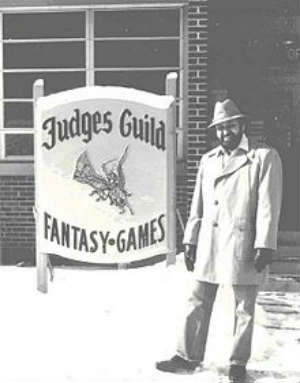So the party is heading to a dungeon (taking several sessions to do so), and they leave Shire's End, the last settlement of the southern portion of the kingdom and head into the Grass Wilderlands of the South.
NPC (non-precious) teen healing god cleric Evador is down in the dumps a bit, having gotten a bit wine tipsy the night before in Montigar Silverglen's tower, and unsuccessfully trying to seduce the almost 300 year old elvish legend.
Evador grew up a rich girl in Tanmoor (her last name is "Del Tanmoor," and if you have "Tanmoor" in your last name you are from old money), had a year or so at the university studying literature, but discovered the religion of Billick the Healing god and joined the order not long ago. She has chosen to be on the "Blue Heart on the Red Path," which essentially means she is on an adventure quest where she might need to spill blood, maybe her own, to get quick higher status at Billicks great cathedral. Her chosen quest is to investigate the old "Meadowlands Dungeon" south of the kingdom. She is a lovely, tall, but physically awkward (DX 8) 19-year-old (in the last game she missed several attacks in a row on a giant ant).
Evador's troubles are very much compounded while on the road to the mining town near the dungeon area, when a Peryton attacks from the blue. It hits her hard, and she is down for the count and immediately going into Death Save mode.
The party wins the day and destroys the beast, but Evador is badly hurt. She is one failed save away from death, but Ruvan the young sorcerer from the Riverlands, happens to have healing. I decide Evador is still going to be out for a while, but she is at least saved.
My first little Roll20 campaign about 3 years ago involved T's elvish bard Xanthia, and she remembered the 20-something Billick cleric "Afina of Mercy" who was encountered on her own Red Path to the same mining town near the dungeon to set up a mini-temple to Billick. So, they haul her into the town and to the small temple that is now a wood building among a lot of tent cabins.
Afina is encountered locking the building and heading out to dinner. When not clericing in the little temple, she likes to dress in the height of current upper class young person Tanmoor fashion (Billick seems to attract young city girls of wealth to the religion), even though the city is almost 200 miles away.
 |
| Blue is the color of healing in my world |
Afina has been successful in the few months since she last saw Xanthia the Bard. Though there is a small tent cabin temple of the fighter god "Diamonnis", the cleric there will only heal those injured in conflict, so Afina has seen a lot of donations from injured mine workers and town maintenance people. Her Red Path has been completed. She is officially high priestess of her own recognized temple (though she is only like 5th level).
So Afina inspects Evadors terrible claw/impact wounds. And there is the focus of this post.
I don't know where it came from, but on the spot I got hit by a bolt from the blue. In my decades of running games, I never differentiated between styles of healing. Healing was healing. But for some reason I improvised some dialogue from the somewhat serious young cleric Afina.
"These wounds. Who healed them (Ruvan the sorcerer had healed Evador for 9 points)? Certainly not a cleric much less a Billick cleric. So jagged and sloppy." She eyed Ruvan...
"Was this you?" Afina said. "Are you a sorcerer?
"What of it?" replied the young caster.
"Well, I suppose you saved her life. We can be grateful for that. But she could be left with terrible scarring. But she still needs more healing, and I think with the blessing of merciful Billick I can help the scars be a minimum."
That was it. Out of the blue after a lifetime of the game I decided that there is different types of healing skill. Billick is one of the first gods I created for the setting as a kid, and over the years I often let Billick clerics have anywhere from a +1 to +1-4 to their heals. But now it is part of my world that you can tell by the leftover wounds and scars if somebody focused on heals did the deed. A sorcerer's heal would be just about saving the life. But a Billick cleric, or most clerics, would be about overall healing which would include a reduction of scarring.
A very minor thing to be sure, but it's kind of fascinating to me that a DM can just add and alter his world with a whim based on a certain situation long after the world is established. Instant creativity that is unique to rpg's. Man, I love winging it. Even if it's for my own fun.
And at the same time I decided that a cleric of a war god won't heal a non-combat violence wound.
Of course, clerics of different deities having different affects is nothing new. But for my setting I will be keeping an eye on clerics to seek out little ways to add flavor to them. To differentiate them with the Rule of Cool.
Cheers.





.jpg)


















































